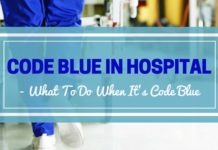Nurses deal with different types of people with different cultures and social backgrounds. Because of this, it’s important for nurses to be skilled in understanding what their patients want and need.
Unfortunately, not all patients are able to verbally communicate their message. If you’ve ever been in this situtation and there’s no interpreter around, doing your job can be a challenge.
To avoid being caught in such situation, you should consider learning medical sign language. It won’t just make your job easier, you can also get the following benefits:
It provides an opportunity for career advancement
Technically, the ability to understand and perform medical sign language isn’t a strict requirement for you to get hired or promoted for a job. However, the ability to demonstrate flexibility in dealing with all kinds of patients, even those who are deaf and mute, can give you an edge. After all, the ability to speak English and being fluent in American Sign Language makes you bilingual.
It betters your communication skills
Being able to understand sign language will make your work as well as your patients’ lives easier. You’ll be able to open the lines of communication with people who have a hard time expressing their concerns because of their inability to talk or hear properly.
See Also: What is Better Hearing and Speech Month?
It helps provide support
Deaf patients, much like your other patients, have rights that should be protected when receiving care. And being able to understand them is one good way to ensure that those rights are protected.
When you are able to communicate with them, you’ll be able to explain the course of treatment, its side effects and what your patients should expect. You’ll be able to help them make the right decision as to which treatment will benefit them the most. You’ll be able to address their concerns, answer their questions and advocate for them.
Keep in mind, however, that although your patients can’t speak, it doesn’t mean that they can’t decide for themselves. You should strive to acknowledge your patients’ autonomy and confidentiality and relay their medical decisions without trying to influence them.
It enhances cognitive skills
Learning more than one language is a great exercise for the brain. It can help you achieve better problem-solving skills and cognitive flexibility. It can also boost your abstract and critical thinking.
How To Sign Basic Medical Terms And Procedures
In sign language, it’s not necessary for you to act out every syllable or word. The idea is to use keywords to relay your message.
For medical procedures and basic phrases, here are some images to guide you.
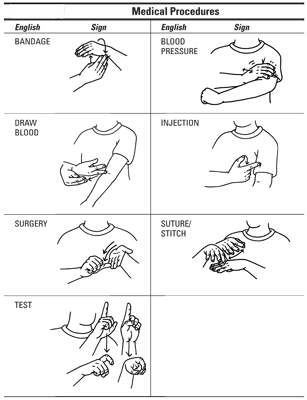
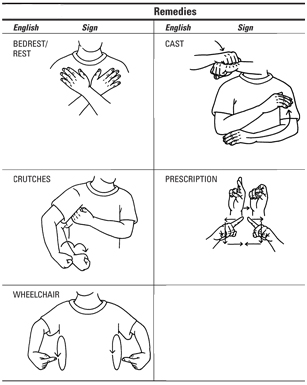
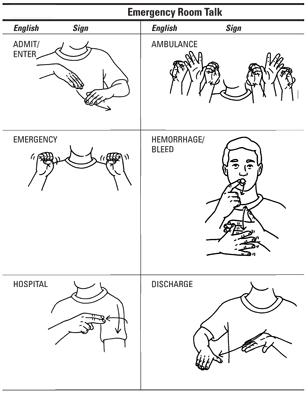
As for medical and diagnostic procedures, particularly those that are abbreviated, you may need to fingerspell using this chart:
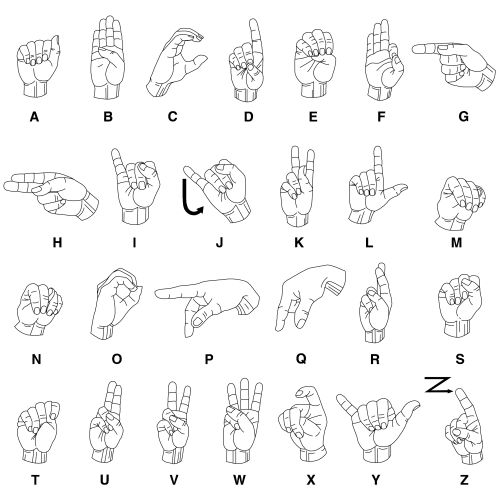
And to help you understand these hand signs better, here are some videos you can check out.
Basic phrases for nurses:
This video is particularly helpful for interviewing patients. It will teach you how to introduce yourself, ask for your patient’s name and date of birth. You’ll also get to learn how to sign for ECG, EEG, MRI and X-ray.
And here’s another one:
In this video, you’ll learn how to sign for pain, medicine and how to ask your patient to lie or sit down. These hand signs are particularly useful during assessment or when you need to prepare your patient for a specific procedure.
For symptoms:
One of the first things you need to ask your patients when they go to the hospital is the signs and symptoms they are experiencing. In this clip, you’ll learn the hand signs for common symptoms, like pain, fever and cough.
For diseases:
Relaying diagnosis or asking your patients about their medical history can be challenging. This video will teach you how to hand sign some of the most basic medical terms, like ultrasound, shots and blood pressure. The lesson also includes hand signs for common medical conditions and diseases.
https://www.youtube.com/watch?v=8X63m7mq7rY
Share this article with nurses and medical staff who are interested in learning medical sign language for work.





